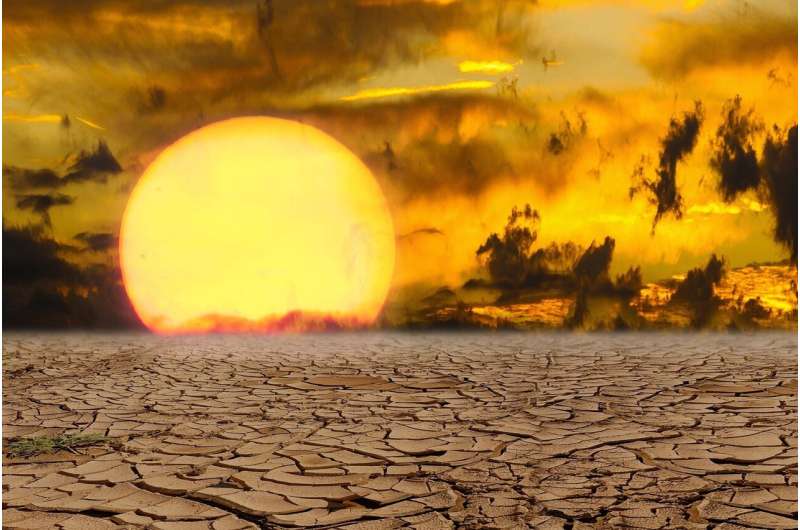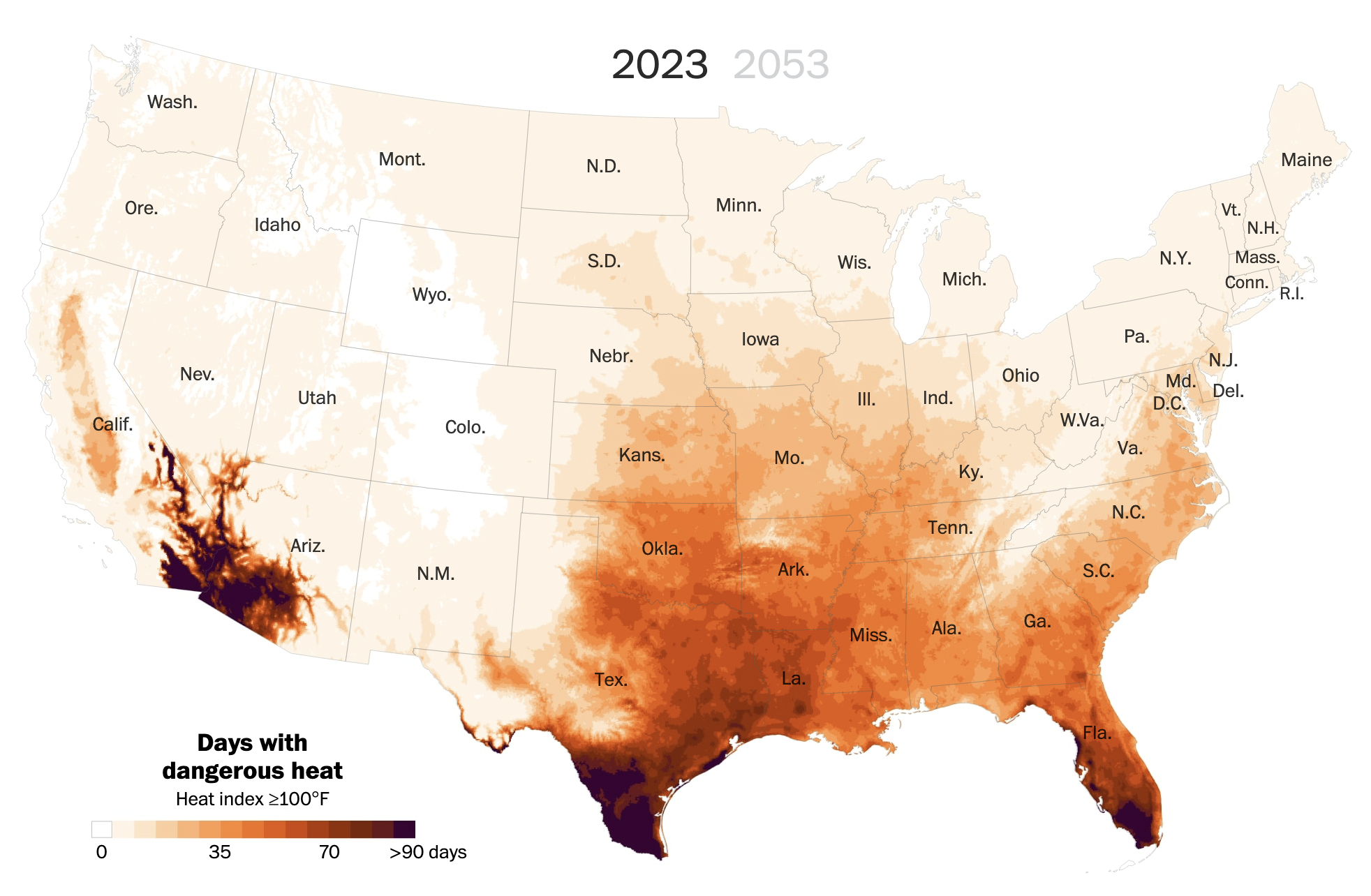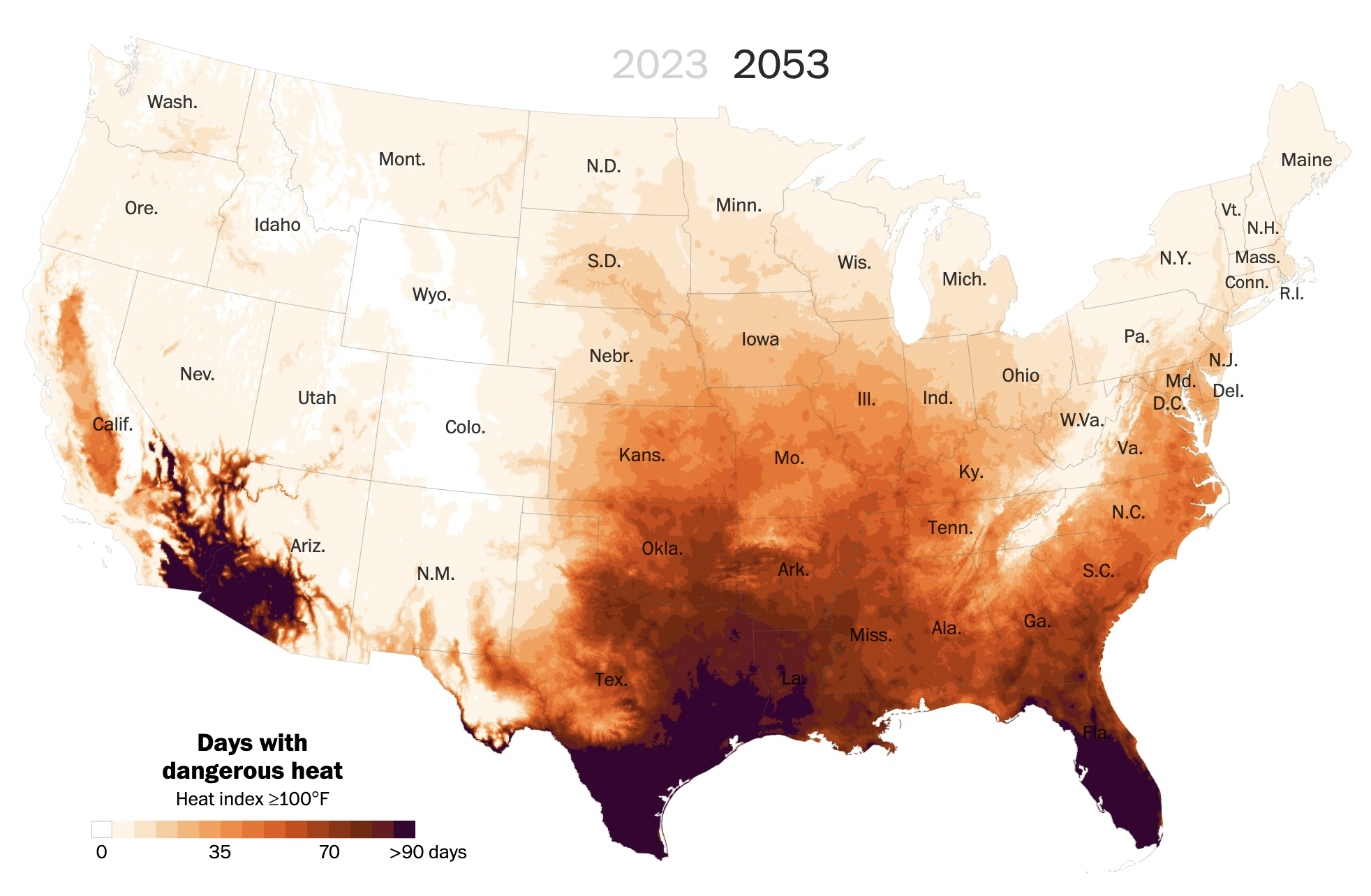
A Washington Post analysis has found that today’s climate conditions have caused an estimated 46% of Americans to endure at least 3 consecutive days with a heat index of 100˚F+ (38˚C+), on average, each year. Heat index is a measure that includes temperature and humidity.
Over the next 30 years, that will increase to 63% of the population.


Nowhere is the danger more widespread than in the South, where global warming is expected to deliver an average of 20 extra days of triple-digit heat per year. In some southern states, such as Texas and Florida, residents could see over 70 consecutive days with the heat index topping 100˚F (38˚C).
“We’re talking about taking summer, which is already hot, and expanding it for months,” said Jaime González, director of the Houston Healthy Cities program for the Nature Conservancy in Texas.
This data comes as more Americans are moving to some of the hottest parts of the United States. For more than a decade, census data has shown Sun Belt states like Arizona, Texas and Florida drawing in new residents, while Northeastern and Midwestern states are not.
This analysis relies on a moderate scenario in which global greenhouse gas emissions peak around 2040 and then slowly decline. If countries act more quickly, or fail to enact climate-friendly policies, the outcome could change.
The analysis found that Miami-Dade County in Florida will likely suffer the most extreme change. Whereas the county sees about 50 days of a heat index above 100˚F (38˚C), it is likely to have 91 broiling days by 2053.